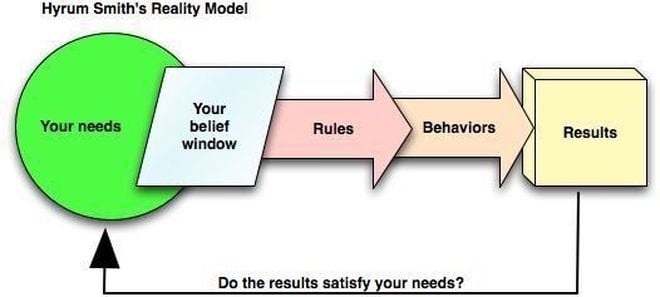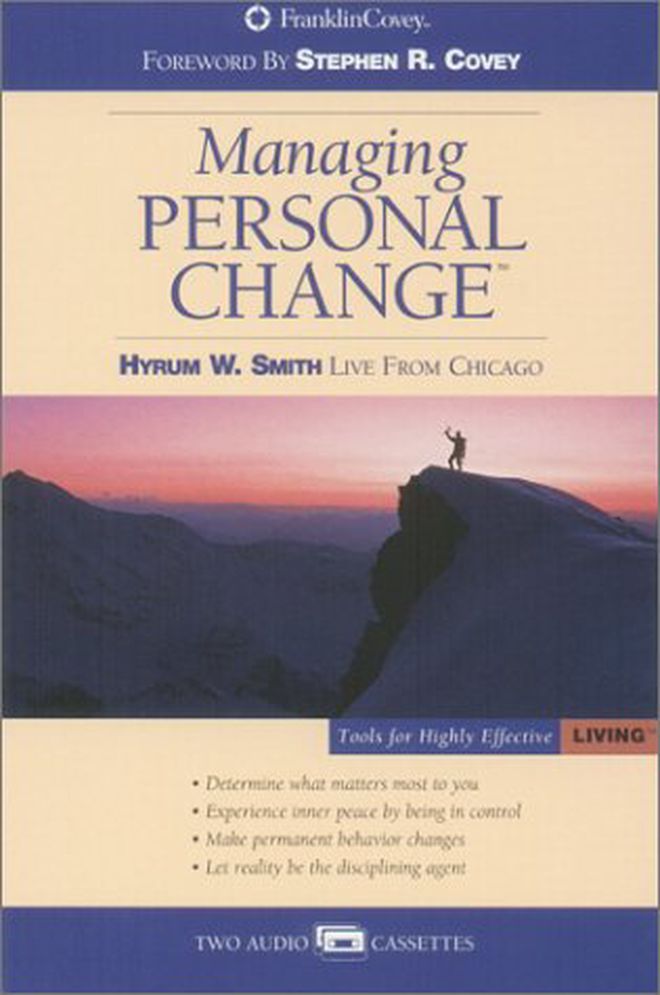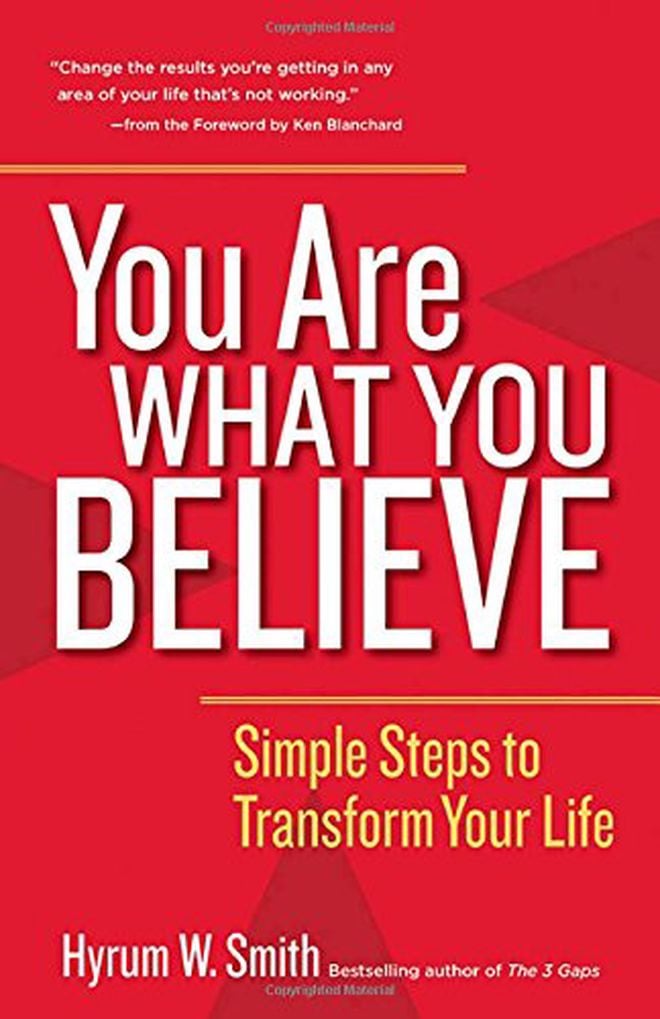Resolution time. It’s the occasion to institute changes. Or at least resolve to change. It doesn’t always work out, does it? The diet gets dropped. The fingernails get bitten. The cigarettes get smoked. The exercise gets blown off. And that’s that. Right?
Maybe not. If you’ve ever had trouble shaking an addiction or behavior that ends up not serving your needs, you might find some hope (and results) in this analysis of addictive behavior, courtesy of Hyrum Smith, founder and creator of the Franklin planning system.
This post isn’t about planning or time management. It’s about the five-step cycle that drives our behavior.
I know I know, you probably believe this is just a bunch of hokum. (We’ll get to beliefs and how they affect behavior in a minute.) But I’m not prescribing anything here. This is just a look at how behavior happens. I think it’s empowering.
(These notes are drawn from a Franklin videotape called “Gaining Control.” As far as I can tell, it’s long out of print. And since then, the Franklin Institute became Franklin-Covey, and Hyrum Smith has gone on to other things. If you find this interesting, there are some links at the bottom of this post to some book resources where you can learn much more on this.)
“The Reality Model”
According to this analysis, there are five steps to human behavior. Here’s the breakdown.

1. Human Needs
We each have four basic human needs.
- To live.
- To love and be loved.
- To feel important.
- Variety.
If we are lacking any one or more of these needs, we may end up trying to fill them in.
File this away. We’ll get back to it.
2. Belief Window
We all have beliefs, principles, convictions that determine how we interpret the world.
In the tape, Hyrum uses an example, “Men are better than women.” Another might be, “My self-worth is dependent upon never losing an argument.”
3. Rules:
These are “If…then…” statements, using the principles in the Belief Window has the premise.
Following on Hyrum’s example: “If I get in an argument, then I must win.”
4. Behavior Patterns:
These are the actions that result from the Rules. Thus, in the example case, “I” can never back down in an argument.
5. Results:
Here’s the question: Will the results meet my needs over time?
If “I” never back down in an argument, never compromise, never acknowledge someone else’s point, then is that making my life better?
Natural Law:
Hyrum Smith then makes these interesting points:
1 - If the results of your behavior do not meet your needs, then you have an incorrect principle on your belief window.
Your actions are the results of your principles on your Belief Window.
2 - Results take time to measure.
Sometimes it takes years. Look at smoking. Or heavy drinking.
3 - Growth is the process of changing principles on your belief window.
You can’t change the behavior if the principles causing that behavior are not addressed. If you believe, “I can’t stick with exercise programs,” then you can try starting a workout regimen but you probably won’t have much success sticking with it. If you believe, “Older women cannot be attractive,” and you feel old, then dressing up will feel like an exercise in despair.
4 - Addictive behavior is the result of deep and unmet needs.
This is the one where I think Hyrum really hit on something. We haven’t talked about those Human Needs since they were listed. But this is where they come into play. When one of you needs is not being met, all your energy goes to filling that need. And if you have a principle on your belief window that is not serving your long-term interests, then odds are good that it’s a result of an unmet need.
“I’m unlovable” could lead to a lot of self-destructive behavior. “I’m ugly,” “When people get to know me, they won’t like me,” “If you want something done right, you have to do it yourself”…. All of these are principles that could be resulting from unmet needs. And thus the behavior resulting from those principles will not change unless the principles in the Belief Window change.
How to translate New Year’s Resolutions into actions
So drawing from the behavior loops identified above, here’s how to change:
1 - Identify the behavior.
2 - Identify possible principles driving the behavior.
3 - Predict future behavior based upon those principles.
4 - Identify alternative principles.
5 - Predict future behavior based upon new principle(s).
I would add this: Make sure your basic human needs – survival, to love and be loved, to feel important, and variety – are being met. Because that’s the foundation of those principles.
This doesn’t mean it’s easy.
Just identifying the principles can be tough. Figuring out how to change them? That is more work than you can do in one afternoon. Sometimes it takes years. Sometimes it takes one day at a time.
One of the principles on my belief window is that if I understand something, I can change it. I think it’s true. And now that I’ve blogged it (which helps me feel important and gives me an avenue to share a little love), I’m going to start putting this reality model to work in my life.
Resources


Hyrum Smith goes into all this much more. This blog post is just a thumbnail. Perhaps the closest available items where Hyrum covers this are: